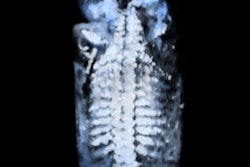Monday, November 28 | 11:50 a.m.-12:00 p.m. | SSC08-09 | Room S402AB
Adding computer-aided detection (CAD) results in greater sensitivity and interreader agreement for radiologists interpreting multiparametric MRI scans for prostate cancer, as well as reduced reading times, according to researchers from Italy.Their study charted the performance of three experienced radiologists who interpreted 89 multiparametric MRI studies using CAD on the first read. They found that 35 patients had at least one clinically significant tumor (39 lesions) and 54 patients had negative findings at a minimum one-year follow-up.
To test the efficacy of CAD on the first reads, a probability CAD map was superimposed over T2-weighted MR images to confirm what the radiologists considered to be prostate cancer. Six weeks later, the trio randomly reviewed the same cases without CAD by interpreting sequences that included T2-weighted, diffusion-weighted, and dynamic contrast-enhanced MRI.
The sensitivity of first reads with CAD increased significantly for patients with a Gleason score of more than 6 and a lesion diameter of at least 10 mm, compared with second reads without CAD. The average reading time also decreased with CAD versus follow-up reads without CAD. Interreader agreement increased with CAD for both per-patient and per-lesion analyses.
The preliminary study showed that first-reader CAD can improve sensitivity in detecting prostate cancer in patients with a Gleason score greater than 6 and lesion diameter of at least 10 mm, increase interreader agreement, and reduce reading time, concluded Valentina Giannini, PhD, an associate researcher at the Candiolo Cancer Institute in Turin, and colleagues.


















